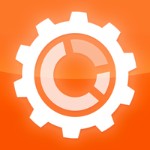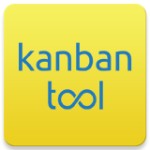Navigating the vast complexity of human cognition, one often stumbles upon two seemingly contrasting approaches to processing information, namely top-down and bottom-up processing. Both serve as intricate mechanisms enabling us to perceive, interact with, and understand our environment, and they continually shape our learning experiences.
By delving deep into the neurological, psychological, and philosophical domains, we can unravel the nuances and interactions between these processing types.
Top-down processing refers to the cognitive approach where one’s background knowledge, expectations, and conceptual frameworks influence the perception and interpretation of sensory information. It’s like using a template of preconceived notions to make sense of new information.
In contrast, only bottom-up processing is a data-driven approach to visual illusions, where visual perception always begins with the stimulus itself, and the interpretation of this external stimulus is uninfluenced by expectations or prior knowledge. This entails a meticulous construction of reality, piece by piece, from the sensory input we receive from the sensory receptors of human face.
The driving force behind perception in bottom-up processing is the stimulus one is currently experiencing in one’s external environment
These processing approaches intertwine seamlessly, building a comprehensive perceptual understanding and interpretation of the world around us, shaping our learning, experiences, decision-making processes, and interactions.
They contribute significantly to various learning models, educational approaches, software development methodologies, and even form the basis of some therapeutic techniques.
The purpose of this blog post and exploration is to shed light on the intricacies of top-down and bottom-up processing, the roles they play in our daily lives, and their impacts on learning and development.
Top Down vs Bottom Up Processing refers to pivotal cognitive approaches affecting our perception and learning, where top down processes influence how top down processing works top-down leverages expectations and prior knowledge, for example, while bottom-up relies on sensory input and external stimuli.

Unraveling Top-Down Processing
Definition and Characteristics
Top-Down Processing is a perceptual interpretation strategy for visual processes wherein our brain utilizes pre-existing knowledge, expectations, and experiences to comprehend and interpret sensory information. It’s like applying a filter of what we already know to what we perceive, effectively using our past visual pathways to predict and shape the future of visual experience.
Role in Learning
In learning contexts, top-down processing is often synonymous with deductive reasoning and analytical approaches. It enables learners to apply their existing knowledge to understand new concepts, solve problems, and make predictions. For example, a seasoned musician might leverage their extensive knowledge of musical theory to quickly grasp a new composition or a novel musical concept.
Applications and Examples
Top-down processing plays a significant role in various fields like software development, where experienced developers use their extensive knowledge to foresee potential issues and devise optimal solutions. Similarly, in therapeutic settings, therapists often use top-down strategies to help clients reshape their cognitive frameworks and address maladaptive beliefs.
Summary:
Top-down processing involves using existing knowledge to interpret new information.
It plays a pivotal role in learning, problem-solving, and decision making.
Various fields utilize top-down processing for optimizing outcomes and addressing issues.

Deciphering Bottom-Up Processing
Definition and Characteristics
Bottom-Up Processing is a cognitive strategy that involves constructing a comprehensive understanding of our environment by piecing together the sensory information we receive. It is devoid of preconceived notions or expectations and is purely driven by the external sensory stimuli being presented to us.
Role in Learning
When it comes to learning, bottom-up processing is akin to inductive reasoning. It allows learners to piece together information from observations, enabling the formation of new concepts and theories. For instance, a child learning to read might start by recognizing letters, then forming words, and eventually understanding sentences and complex ideas, all through a bottom-up approach.
Applications and Examples
In the realm of software development, both bottom up and top-up approaches often involve building software from the top down to process information in smallest units, progressively integrating them to form a complete system. Moreover, in psychological therapies, both the bottom up process and top-up techniques might include exposure therapies where clients gradually face their fears, thus facilitating a reconfiguration of their emotional responses.
Summary:
Bottom-up processing is data-driven, built upon sensory input without the influence of prior knowledge.
It facilitates the formation of new concepts and theories through observation.
It’s applied in varied domains like software development and therapy for progressive development and learning.

Interactions and Interdependencies
How They Work Together
While seemingly contrasting, top-down and bottom-up processing often operate simultaneously, forming a symbiotic relationship. One might initiate a learning process through a bottom-up approach by absorbing new information, and then employ top-down processing to integrate this newfound knowledge with existing cognitive structures.
Impact on Perception and Learning
The harmonious interaction between these processing types enhances our ability to perceive our surroundings accurately and learn efficiently. It allows us to be adaptable, leveraging our previous knowledge when appropriate while remaining open to new information and experiences.
Example: Reading a Book
Consider the process of reading a book. The recognition of words and letters occurs through bottom-up processing, while the interpretation of the meaning, context, and implications of the text is influenced by top-down processing, based on our prior knowledge and experiences.
Summary:
Top-down and bottom-up processing work in tandem to facilitate perception and learning.
They enable adaptability, accuracy, and efficiency in interpreting information.
The interplay between them is evident in everyday activities like reading.
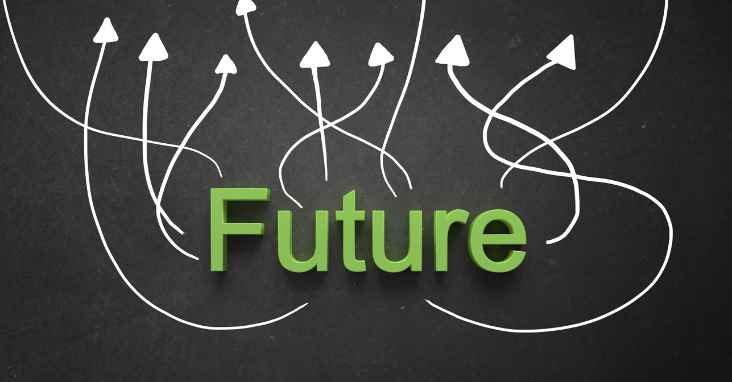
Implications and Future Directions
Influence on Educational Strategies
Understanding the dynamics between top-down and bottom-up processing can significantly impact educational methodologies. It can aid in developing tailored learning strategies, considering the learner’s existing knowledge and the nature of the material being learned, thereby fostering a more conducive learning environment.
Innovations in Technology
The interplay between these cognitive strategies also has implications in technological innovations, including Artificial Intelligence. AI models often employ a combination of top-down and bottom-up processing to interpret and learn from data, allowing for advancements in natural language understanding, pattern recognition, and predictive modeling.
Developing Cognitive Flexibility
By recognizing the importance of balancing top-down and bottom-up approaches, individuals can cultivate cognitive flexibility, enabling them to approach situations with an open mind while efficiently utilizing their previous knowledge, and experiences.
Summary:
The interaction of processing types influences educational methodologies and technological innovations.
Recognizing and balancing these approaches can enhance cognitive flexibility and learning.
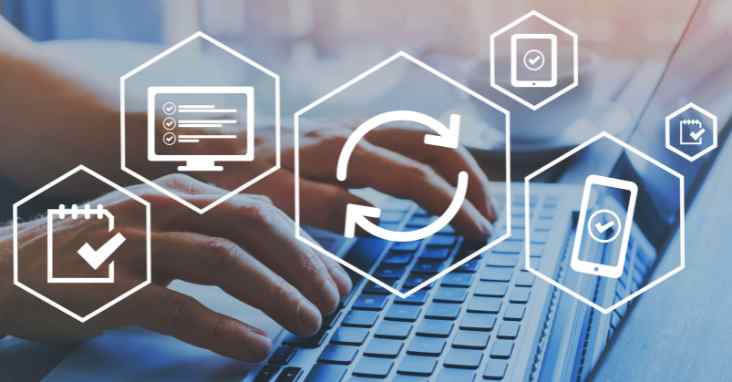
Software Tools
In the modern world, several software tools exemplify the implementation of top-down and bottom-up processing approaches, demonstrating their versatility and efficacy across diverse domains. Each tool embodies one direction of distinctive features and advantages, serving as a practical representation of these cognitive strategies.
Duolingo:
Duolingo stands out as a revolutionary language-learning platform, integrating top-down and bottom-up processing to facilitate seamless language acquisition. This platform employs a bottom-up approach by introducing users to new words and grammar rules, allowing them to construct understanding from smaller linguistic units to more complex structures. Simultaneously, it leverages top-down processing by enabling learners to apply their existing linguistic knowledge and contextual understanding to interpret new information and make educated guesses.
Advantages of Duolingo:
Personalization: Duolingo offers personalized learning paths, adapting to individual learning styles and pacing, ensuring optimal learning experiences.
Gamification: The incorporation of game-like elements enhances engagement and motivation, making learning enjoyable and rewarding.
Diverse Language Options: Users have access to a plethora of languages, fostering linguistic diversity and multicultural exposure.
Accessibility: Being a free platform with mobile compatibility, it ensures that learning is accessible to a wide range of individuals.
IBM Watson:
IBM Watson epitomizes the fusion of top-down and bottom-up processing in the realm of Artificial Intelligence. It uses both bottom up and top-up processing by analyzing vast datasets, recognizing patterns, and learning from the input data. Concurrently, it utilizes top-down processing by applying pre-learned knowledge and contextual understanding to interpret new raw data, make predictions, and solve complex problems.
Advantages of IBM Watson:
Advanced Analytics: Watson provides sophisticated analytics capabilities, allowing for in-depth data exploration and insights extraction.
Natural Language Understanding: Its advanced NLU enables the comprehension and interpretation of human language, facilitating effective human-computer interaction.
Scalability: IBM Watson’s scalable architecture allows businesses to adapt and grow, meeting evolving needs and challenges.
Industry-specific Solutions: Watson offers tailored solutions across various industries, addressing specific challenges and requirements.
Khan Academy:
Khan Academy exemplifies the amalgamation of top-down and both bottom up and both top down process bottom-up processing in educational methodologies. It employs a bottom-up approach by presenting learners with foundational concepts and progressively introducing more complex materials, allowing for the gradual construction of knowledge. At the same time, it utilizes both top down process top-down processing as learners use their pre-existing knowledge to contextualize new information, draw connections, and formulate understanding.
Advantages of Khan Academy:
Comprehensive Curriculum: Khan Academy offers a wide range of subjects, catering to diverse learning needs and academic goals.
Interactive Learning: The platform provides interactive exercises and instructional videos, fostering active learning and concept mastery.
Self-paced Learning: Learners can progress at their own pace, revisiting concepts as needed, ensuring thorough understanding and retention.
Free Access: As a non-profit educational platform, it provides free access to quality education, democratizing learning globally.
By integrating these advanced software tools, individuals and organizations can leverage the synergistic benefits of top-down and bottom-up processing, optimizing learning experiences, analytical capabilities, and solution development. The distinctive advantages of each tool highlight the practical applications and impactful results achievable through the balanced implementation of these cognitive strategies.
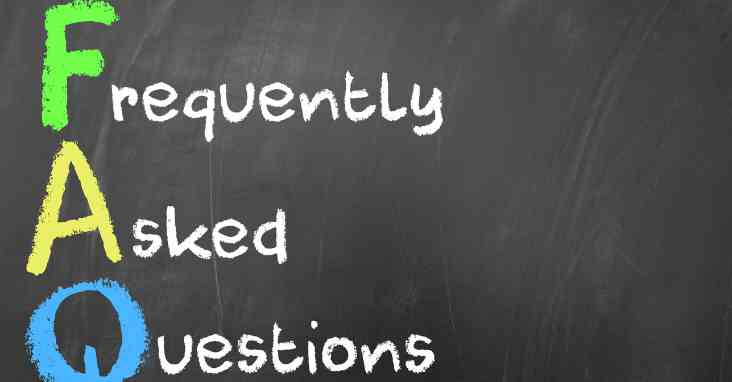
FAQs
How do top-down and bottom-up processing differ in their approach to information interpretation?
Top-down processing is a deductive approach, utilizing existing knowledge, expectations, and experiences to interpret sensory information and make sense of the world.
In contrast, bottom-up processing is an inductive method, where understanding incomplete perception is built from the bottom up processing works smallest units of sensory information, piecing together the information without the influence of preconceived notions or expectations.
Is it common for top-down and bottom-up processing to work in conjunction within cognitive functions?
Absolutely! These processing types often operate concurrently, establishing a synergistic relationship to optimize learning and perception. By integrating new, unbiased sensory information along with prior knowledge, individuals can interpret and understand their environment more comprehensively and adaptively.
How can the influence of top-down processing impact our learning experiences?
Top-down processing significantly shapes learning experiences by allowing individuals to apply existing knowledge and experiences to new situations.
This facilitates the formation of predictions, efficient problem-solving, and the acquisition of new concepts through analytical and deductive reasoning, enriching learning experiences and fostering cognitive flexibility.
Does bottom-up processing tend to be more accurate due to its reliance on sensory information?
While it may seem that bottom-up processing, being data-driven and reliant on sensory inputs, could yield more accurate results, it’s not necessarily more accurate than top-down processing.
Both approaches have their merits and demerits, with top-down visual processing of visual information being susceptible to biases due to a perception based on prior knowledge and expectations or visual illusions, and bottom-up visual processing being limited by the available sensory data and may lack context.
How are top-down and bottom-up processing methodologies applied in therapeutic interventions?
In therapeutic settings, top-down strategies may be employed to modify cognitive frameworks and beliefs, fostering healthier thought patterns and behaviors.
Meanwhile, bottom-up techniques might focus on modifying physiological responses through exposure therapies and sensory integration interventions, aiming to reshape emotional and behavioral reactions to environmental stimuli.
Can an individual improve their top-down processing skills? If so, how?
Indeed, individuals can enhance top-down processing abilities by continually expanding their knowledge base and gaining diverse experiences.
Developing analytical and deductive reasoning skills and cultivating a curiosity-driven approach to learning can further bolster the efficacy of top-down processing, enabling more insightful and nuanced interpretations of information.
Why is bottom-up processing crucial when learning new and unfamiliar concepts?
Bottom-up processing is pivotal in learning new concepts as it allows individuals to start with the basics, gradually constructing theories and frameworks from the observed data.
This ground-up approach is essential for developing a solid understanding of unfamiliar domains, ensuring that the foundational knowledge is robust before delving into more complex aspects require prior knowledge.
In the field of software development, how are top-down and bottom-up processing approaches manifested?
Software developers often leverage a bottom-up approach by constructing software from smaller, manageable units, ensuring each component functions correctly before integrating them into a more complex system.
Conversely, a top-down approach is employed to envision the overall system architecture, foresee potential challenges, and apply previous experiences and knowledge to devise robust and efficient solutions.
How can striking a balance between top-down and bottom-up processing influence our decision-making processes?
Maintaining equilibrium between these processing types is instrumental in rendering our decision-making processes more informed and versatile.
It allows individuals to harness the power of their accumulated knowledge while remaining open to new information, ensuring decisions are both grounded in experience and adaptable to evolving circumstances.
How do advancements in Artificial Intelligence utilize top-down and bottom-up processing for enhanced learning and data interpretation?
Progress in AI, particularly in fields like natural language understanding and pattern recognition, frequently employs a combination of top-down and bottom-up processing to decipher and learn from data more effectively.
Top-down processing allows AI models to utilize learned patterns and knowledge to interpret new data, while bottom-up processing enables the models to learn and adapt by analyzing new patterns and incoming information, fostering a more holistic and adaptable learning process.

Conclusion
Delving into the realms of cognitive psychology and information processing, the dichotomy between top-down and bottom-up processing emerges as a cornerstone for understanding our interactions with and interpretations of the world around us.
The intricate dance between these two processing methodologies paints a holistic picture of our cognitive ecosystem, emphasizing the importance of a balanced interplay in fostering an enriched and nuanced perspective.
Top-down processing, with its roots deeply embedded in our existing knowledge, experiences, and expectations, guides our perception by infusing meaning into the sensory inputs we encounter. This approach empowers us to navigate our environments more efficiently, allowing us to decipher ambiguous stimuli, make predictions, and swiftly respond to our surroundings based on the wealth of knowledge we have accumulated.
It manifests as the canvas of context, where our past learning paints a backdrop, enabling us to weave new information, context clues and contextual clues into the existing tapestry of our understanding perceive things.
Conversely, bottom-up processing serves as the building blocks of our perceptual world, where raw sensory data is meticulously analyzed, synthesized, and constructed into coherent units of understanding.
It acts as the foundation upon which our cognitive structures are erected, ensuring that our interpretations are firmly grounded in the empirical reality of our sensory experiences. This method is the architect of learning, enabling us to construct knowledge from scratch, piece together information, and form new conceptual frameworks that are solid, detailed, and robust.
The harmonic convergence of top-down and bottom-up processing approaches underscores the adaptability and resilience of our cognitive capacities. A balanced integration of these methods allows us to be both anchored in our learned experiences and receptive to the myriad of new information constantly enveloping us.
It fosters a dynamic equilibrium, enabling us to be both shaped by and shapers of our environments, continually refining our understanding and adapting to the multifaceted reality we inhabit.
In realms spanning education, therapy, software development, and artificial intelligence, the symphonic interweaving of top-down and bottom-up processing illuminates pathways to innovation, learning, and adaptation.
Educational platforms like Khan Academy and Duolingo, therapeutic interventions, pioneering AI technologies like IBM Watson, all encapsulate the essence of this cognitive duality, harnessing its power to drive progress, enhance learning, and catalyze transformative change.
Reflecting on the overarching themes of cognitive processing, it’s evident that the coalescence of top-down and bottom-up processing is not merely a theoretical construct but a living, breathing entity that permeates every facet of our existence.
It’s the lens through human visual cortex through which we perceive our world, the architect of our learning experiences, and the navigator of visual cortex visual pathways used in our cognitive journeys. By embracing the mutual complementarity of these processing types, we can traverse the landscapes of knowledge with a compass calibrated by experience and a map etched with the details of our sensory explorations, fostering a journey that is both grounded and transcendent.
In conclusion, the dance between top-down and bottom-up processing is a timeless symphony, orchestrating our interactions with the world. It’s a dialogue between the known and the unknown, a harmonious exchange between experience and discovery.
By delving deeper into this process of dynamic interplay and appreciating the process and the intricate balance it maintains, we unlock the doors to uncharted territories of understanding, allowing us to explore, learn, and evolve in our perpetual dance with the world.
Key Takeaways:
Balanced Integration: The harmonious amalgamation of top-down and bottom-up processing is pivotal for nuanced understanding and adaptive learning.
Foundational & Contextual Learning: While bottom-up processing lays the foundational bricks of learning, top-down processing provides the contextual landscape to enrich that foundation.
Versatile Application: The application of these processing types transcends diverse domains, driving innovation and learning in education, therapy, software development, and artificial intelligence.
Cognitive Symphony: The interweaving of these processing approaches creates a cognitive symphony that guides our perceptions, decisions, and interactions with the ever-evolving world around us.







